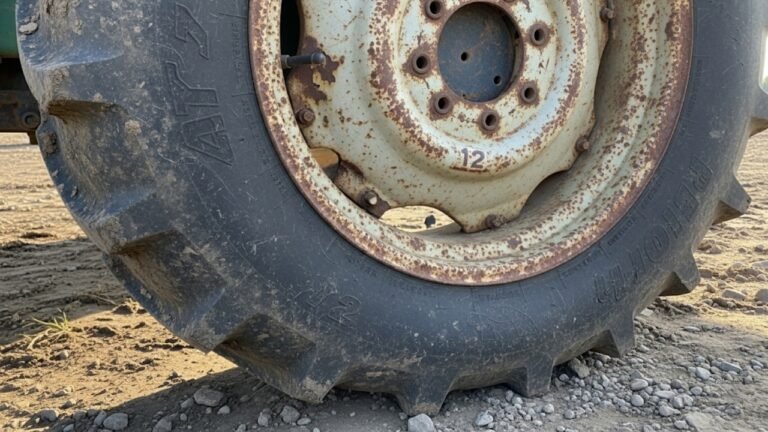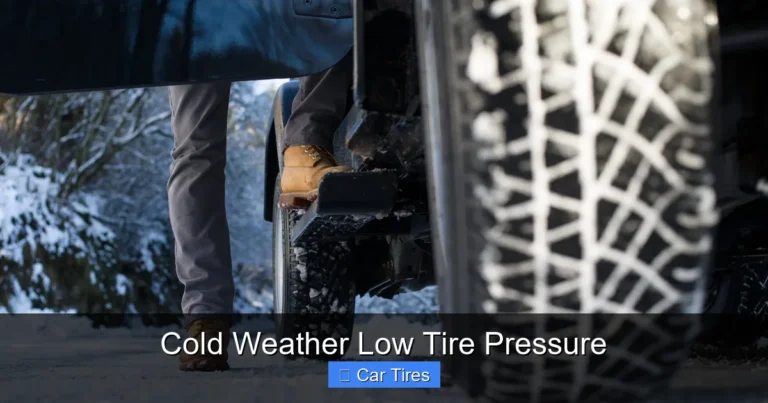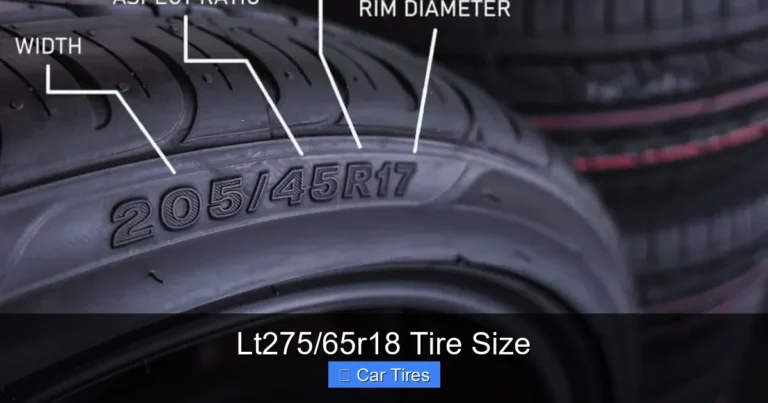Is Goodyear Tires Good? My Honest Experience
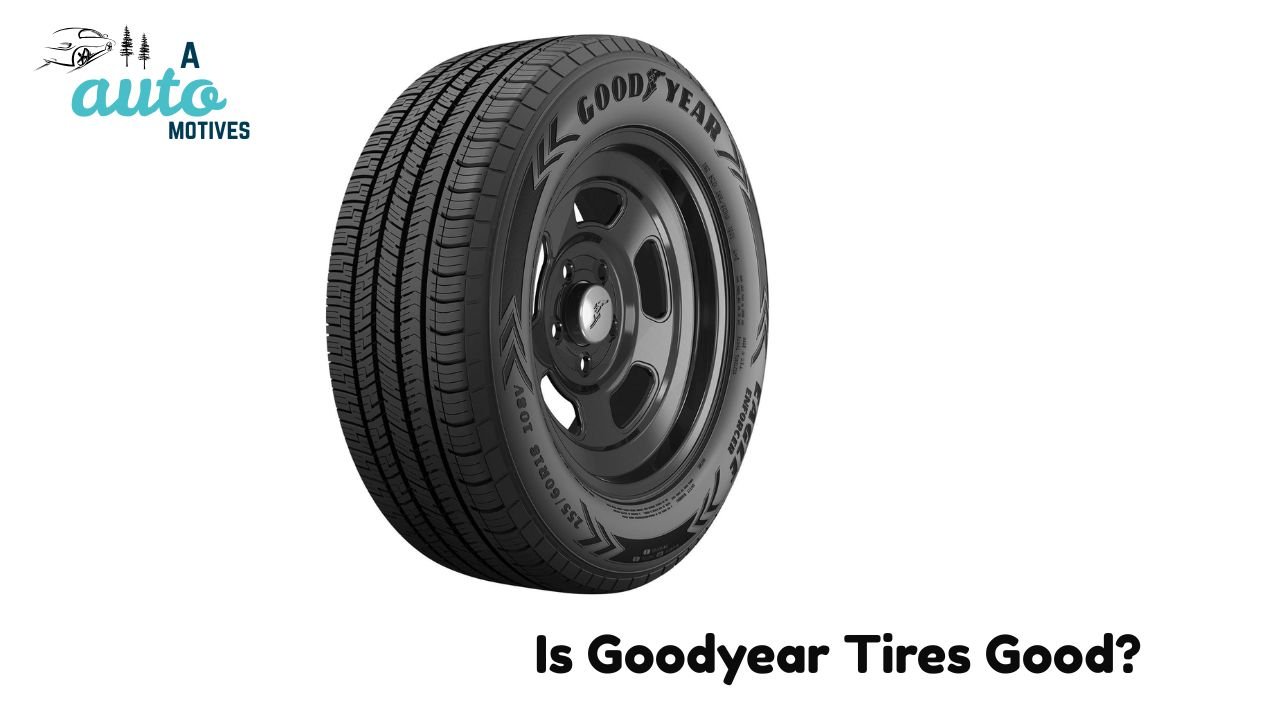
When it comes to car tires, most of us don’t think twice until it’s time to replace them. I remember standing at a tire shop, surrounded by rows of brands—Michelin, Bridgestone, Continental, and of course, Goodyear. The name “Goodyear” stood out to me instantly. It’s one of those brands you grow up hearing about, almost like Coca-Cola in the tire world. But the big question remained: are Goodyear tires actually good, or just famous because they’ve been around forever?
I’ve been driving for over a decade, and in that time, I’ve tested more tire brands than I’d like to admit. From cheap budget options that wore out way too soon to premium sets that felt like a luxury mattress under my car, I’ve seen it all. Goodyear was one of the brands I kept coming back to—partly out of curiosity, partly because so many people recommended them. After logging thousands of miles across highways, backroads, and even snow-covered streets, I finally have a clear picture of what Goodyear offers.
This isn’t a technical review filled with jargon. It’s my honest experience—the ups, the downs, and whether I’d spend my hard-earned money on them again. Let’s dig into the details.
In This Article
- 0.1 Performance That Matters: Real-World Driving with Goodyear
- 0.2 What I Genuinely Like About Goodyear Tires
- 0.3 Where Goodyear Could Be Better
- 0.4 Goodyear vs Fullway: My Side-by-Side Experience
- 0.5 Who Should Actually Buy Goodyear Tires?
- 0.6 My Final Verdict: Is Goodyear Tires Good?
- 0.7 FAQs About Goodyear Tires
- 1 Closing Thoughts
Performance That Matters: Real-World Driving with Goodyear
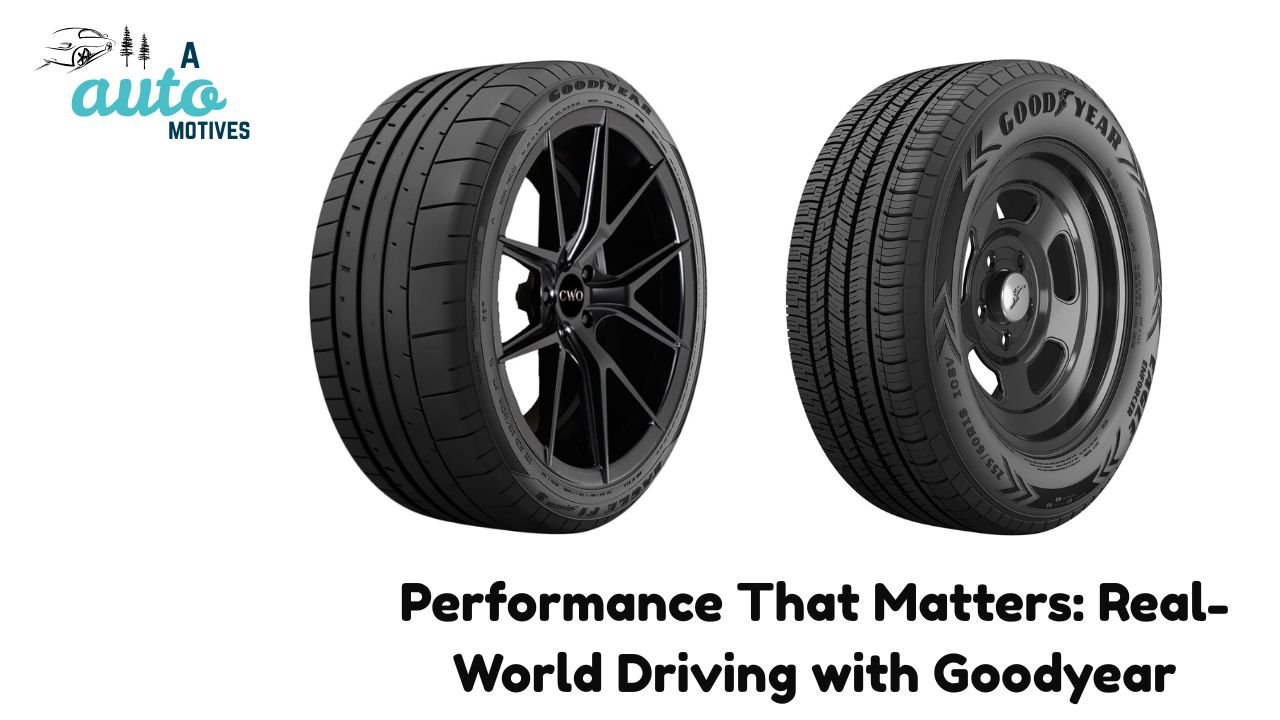
When you’re buying tires, specs and warranties sound nice, but what really matters is how they behave once your car hits the road. I tested Goodyear tires across different terrains and weather conditions, and here’s how they performed in key areas.
Traction and Grip
On dry roads, Goodyear tires felt reliable. Whether I was cruising on highways at 75 mph or taking tight turns on city streets, the grip was steady. There wasn’t that unsettling “slip” feeling you sometimes get with cheaper brands.
In the rain, they impressed me the most. I’ve driven through sudden downpours where water practically covered the roads. While some tires tend to “float” in those conditions, Goodyear’s tread design seemed to cut through water effectively, reducing hydroplaning. Braking distances weren’t as razor-sharp as premium Michelin tires, but I never felt unsafe.
When it came to snow, my experience was mixed. Light snow? No problem. The tires held their own, and I felt in control. But during a particularly icy winter trip, I realized Goodyear’s all-season models weren’t enough. They did better than bargain all-seasons, but they couldn’t match a dedicated winter tire like Bridgestone Blizzak.
My takeaway: For everyday driving—rain or shine—they’re dependable. But if you live in extreme winter conditions, consider adding a dedicated snow tire to your setup.
Durability and Longevity
One of the biggest frustrations with tires is how quickly some of them wear out. With Goodyear, I was pleasantly surprised. After putting in nearly 30,000 miles, the tread still looked healthy and wore evenly. Unlike cheaper brands I’ve used, which developed bald spots early, these stayed consistent.
Most Goodyear tires come with warranties ranging from 50,000 to 80,000 miles, and based on my use, that seems realistic. While Michelin’s Defender series might edge them out in sheer longevity, Goodyear held its own and definitely outperformed budget brands that barely last half as long.
I know plenty of drivers who’ve gotten 4 to 6 years of life from their Goodyears with regular rotations and proper air pressure. From my own experience, these tires are built for the long haul—something worth considering if you hate replacing tires every couple of years.
Comfort and Road Noise
Comfort might not sound important until you’ve done a five-hour drive on rough pavement. With Goodyear, the ride quality felt smooth. The tires absorbed bumps and potholes better than most budget options I’ve tried, making long drives less tiring.
As for noise, it depends on the model. On my highway trips, the Goodyears stayed fairly quiet—definitely quieter than cheaper brands. That said, they weren’t whisper-silent. Compared to premium touring tires designed for luxury vehicles, there was a subtle hum at higher speeds. Not distracting, but noticeable if you’re sensitive to sound.
Overall, I’d rate their comfort as very good. Not the best in the world, but more than good enough for daily driving and road trips.
Fuel Efficiency
Tires affect fuel economy more than most people realize. Before switching to Goodyear, my car averaged about 28 MPG. After putting on a set of their low-rolling-resistance models, I noticed my mileage jump to around 29.5 MPG. It’s not a massive difference, but over time, that extra 1.5 MPG adds up in fuel savings.
Goodyear clearly puts effort into designing tires that reduce rolling resistance without compromising grip. If you’re someone who drives a lot, that small bump in efficiency can make a noticeable impact on your wallet.
Handling and Stability
The final piece of the performance puzzle is handling. Goodyear tires gave me a reassuring sense of control, especially at highway speeds. Even when I pushed the car a little harder around corners, the tires felt planted.
Were they as sharp and sporty as performance tires? No. But that’s not their main goal. They’re designed to balance stability, comfort, and durability, which they do quite well. For everyday drivers who want a reliable and safe feel behind the wheel, Goodyear delivers.
What I Genuinely Like About Goodyear Tires
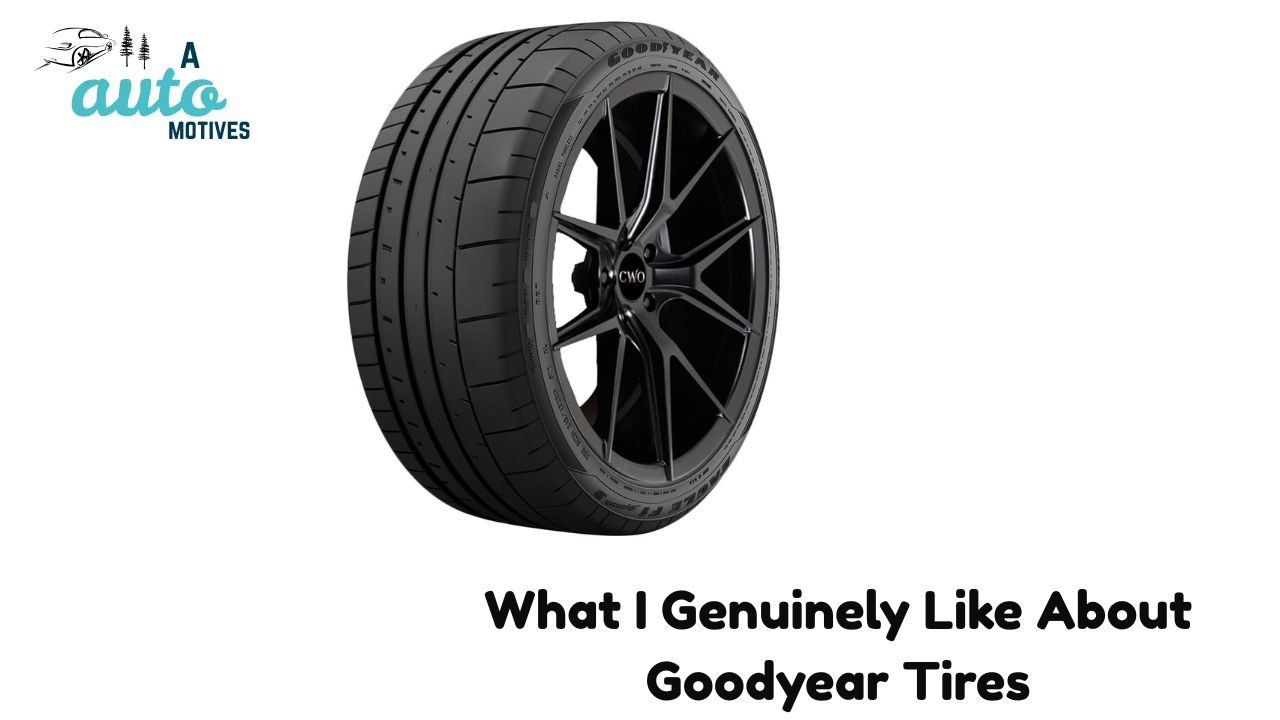
Now that I’ve shared how they perform on the road, let me highlight what stood out to me the most—the reasons I’d recommend them to friends and family.
-
Reliable Grip Across Conditions – Rain or shine, Goodyear tires gave me confidence. They handled wet roads better than many brands, and while they’re not perfect for deep snow, they outperformed standard budget all-seasons.
-
Long Lifespan – Unlike some tires that start fading fast, Goodyear held up for tens of thousands of miles. The tread wore evenly, and I didn’t feel like I had to baby them to make them last.
-
Comfortable for Daily Driving – Long drives were noticeably smoother, and bumps didn’t rattle the cabin as much. For anyone who commutes often, this matters more than you think.
-
Fuel-Saving Potential – That small bump in MPG may not sound like much, but over thousands of miles, it puts extra cash back in your pocket.
-
Trusted Brand with History – There’s a sense of reassurance when you buy from a company that’s been around for decades. Goodyear has a reputation for a reason, and in my experience, it’s earned.
Where Goodyear Could Be Better
No tire brand is perfect, and Goodyear is no exception. Here are the areas I think they fall short.
-
Price Point – They’re not the cheapest option. If you’re on a tight budget, you’ll definitely notice the difference compared to entry-level brands. While the quality justifies the price, it can still be a stretch for some drivers.
-
Not Built for Extreme Winters – Their all-season tires do fine in light snow, but if you live in places with harsh winters, you’ll need a dedicated snow tire. Without it, you’re pushing the limits of safety.
-
Availability Can Be Hit-or-Miss – Certain Goodyear models aren’t always in stock at big retailers. I had to order mine online because my local shop didn’t carry the exact set I wanted.
-
Noise Levels on Some Models – While many are quiet, a few performance-oriented models produce more road noise than I’d like. If silence is your top priority, it’s worth checking reviews on specific models first.
Goodyear vs Fullway: My Side-by-Side Experience
At one point, I actually switched from Goodyear to Fullway just to see if a budget brand could hold its own. On paper, Fullway looked appealing—half the price and decent reviews online. But after a year of testing, the differences were clear.
-
Braking Distance: Goodyear consistently stopped shorter, especially on wet and icy roads. With Fullway, I noticed longer stopping distances that made me uneasy.
-
Wet Roads: In heavy rain, Goodyear tires cut through water better. Fullway tires struggled more, especially during sharp turns.
-
Durability: My Fullways wore out much faster. After 20,000 miles, the tread was noticeably thinner, while my Goodyears still looked solid at the same mileage.
-
Comfort: The ride on Fullway was rougher and noisier compared to Goodyear. Long trips felt more fatiguing.
-
Price: Fullway was definitely cheaper up front, but factoring in longevity and performance, I felt Goodyear gave better value in the long run.
So while Fullway works fine for short-term or budget needs, Goodyear clearly outperformed them across almost every category.
Who Should Actually Buy Goodyear Tires?
After testing them in so many conditions, I’ve realized Goodyear isn’t for everyone—but they’re perfect for certain types of drivers.
-
Daily Commuters: If you spend most of your time on highways or city roads, Goodyear gives you a great balance of durability, comfort, and traction. You won’t have to replace them often, and you’ll get a smoother, safer drive.
-
Road Trippers: For those who love long-distance travel, these tires offer the stability and comfort you’ll appreciate after hours on the road. Plus, that extra bump in fuel efficiency adds up over extended journeys.
-
Drivers in Mild Climates: If you live somewhere with four mild seasons—where snow isn’t extreme—Goodyear’s all-season models are ideal. They’ll get you through rain, sun, and light snow without issue.
But Goodyear isn’t the perfect fit for every situation:
-
Extreme Winter Drivers: If you’re in places where ice and deep snow dominate half the year, you’ll need a dedicated winter tire. Goodyear’s all-seasons simply won’t compete with something like Bridgestone Blizzak or Michelin X-Ice.
-
Off-Road Enthusiasts: While Goodyear does have rugged off-road models, most of their mainstream all-seasons are better suited for pavement than mud, gravel, or rocky trails. Hardcore adventurers may want a specialized off-road brand.
-
Budget-Conscious Buyers: If you’re looking for the cheapest possible option, Goodyear won’t fit the bill. They’re more of a mid-to-premium brand, designed for long-term value rather than upfront savings.
In short: Goodyear shines for everyday drivers who want long-lasting quality without constant worry.
My Final Verdict: Is Goodyear Tires Good?
So, after years of driving with Goodyear tires, here’s my honest conclusion: Yes, Goodyear tires are good. In fact, they’re one of the most well-rounded options you can buy today.
They won’t blow you away with ultra-sporty performance or whisper-quiet luxury, but they consistently deliver on the things that actually matter—durability, grip, comfort, and reliability. I’ve trusted them on long road trips, late-night rainy drives, and even during unexpected snowfalls.
That trust is worth something. Sure, they cost more than budget tires, but the peace of mind and longer lifespan more than make up for it. In many ways, buying Goodyear felt like making a “grown-up” choice: not flashy, but smart and dependable.
If you’re looking for a tire brand that will keep you safe, last for years, and make daily driving more enjoyable, Goodyear is absolutely worth considering.
FAQs About Goodyear Tires
Are Goodyear tires worth the price?
Yes. While they cost more than entry-level brands, their durability and comfort mean you replace them less often. In the long run, they save money and hassle.
How long do Goodyear tires usually last?
Most Goodyear tires are rated between 50,000 and 80,000 miles. With proper care—like regular rotations and correct air pressure—you can easily get 4 to 6 years of solid use.
Are Goodyear all-season tires good for snow?
They handle light snow fairly well, but they’re not designed for heavy ice or deep snow. For tough winters, Goodyear’s own winter line, like the Ultra Grip, is a much safer bet.
Do Goodyear tires improve fuel efficiency?
Yes. Models like the Assurance Fuel Max are built with low rolling resistance, which can improve mileage by 2–3%. I personally noticed about a 1.5 MPG boost after switching.
How does Goodyear compare to Michelin, Bridgestone, or other big brands?
Goodyear balances performance, comfort, and value really well. Michelin might last slightly longer, and Bridgestone may offer more winter-specific performance, but Goodyear tends to be the more affordable “middle ground” choice without major weaknesses.
Can Goodyear tires be used for off-road driving?
Yes, but only certain models. Goodyear Wrangler tires are designed for off-road conditions, while their standard all-seasons are better suited for highways and city roads.
Closing Thoughts
Choosing the right tires is never easy. It’s a decision that affects your safety, your comfort, and even your wallet over time. After putting Goodyear through years of testing, I can confidently say they’re a solid choice. They may not be the absolute best in every single category, but they consistently deliver a balance that few brands can match.
If you want a tire that lasts, performs well in most conditions, and makes driving less stressful, Goodyear is more than just “good.” It’s dependable. And when it comes to something as important as your tires, that dependability makes all the difference.

